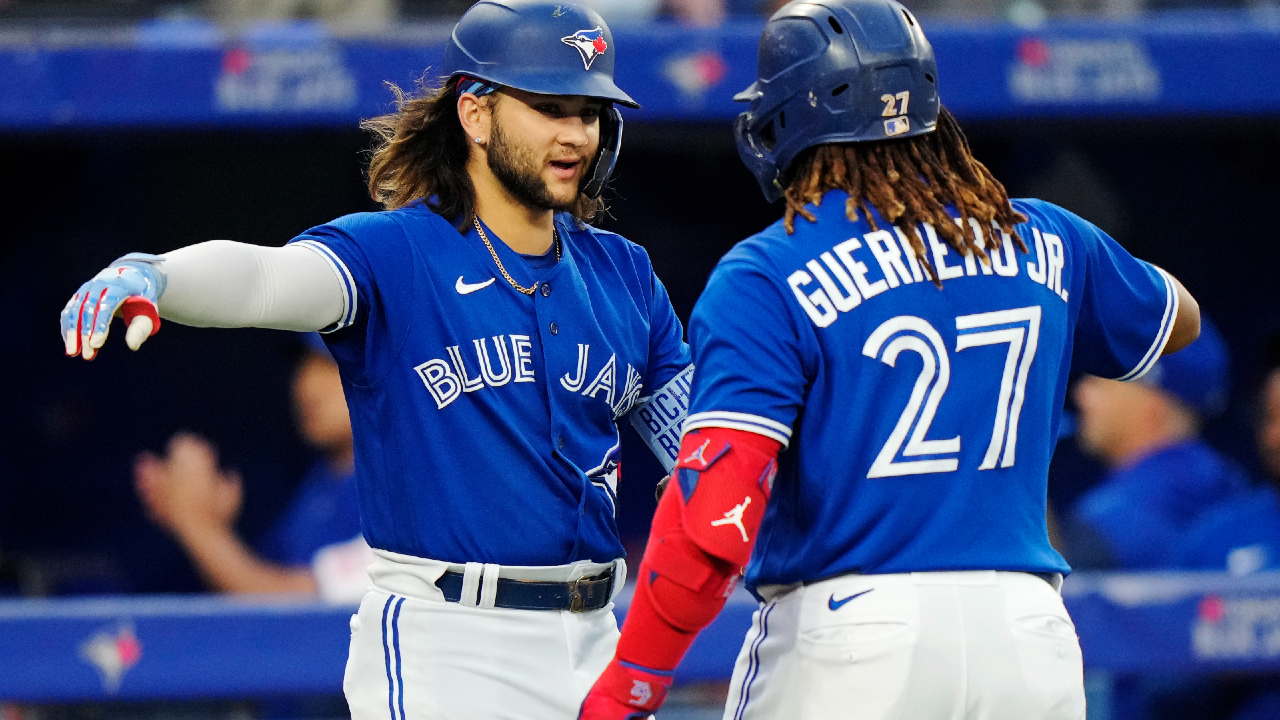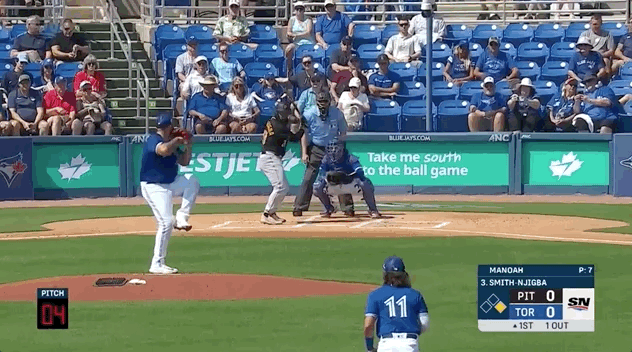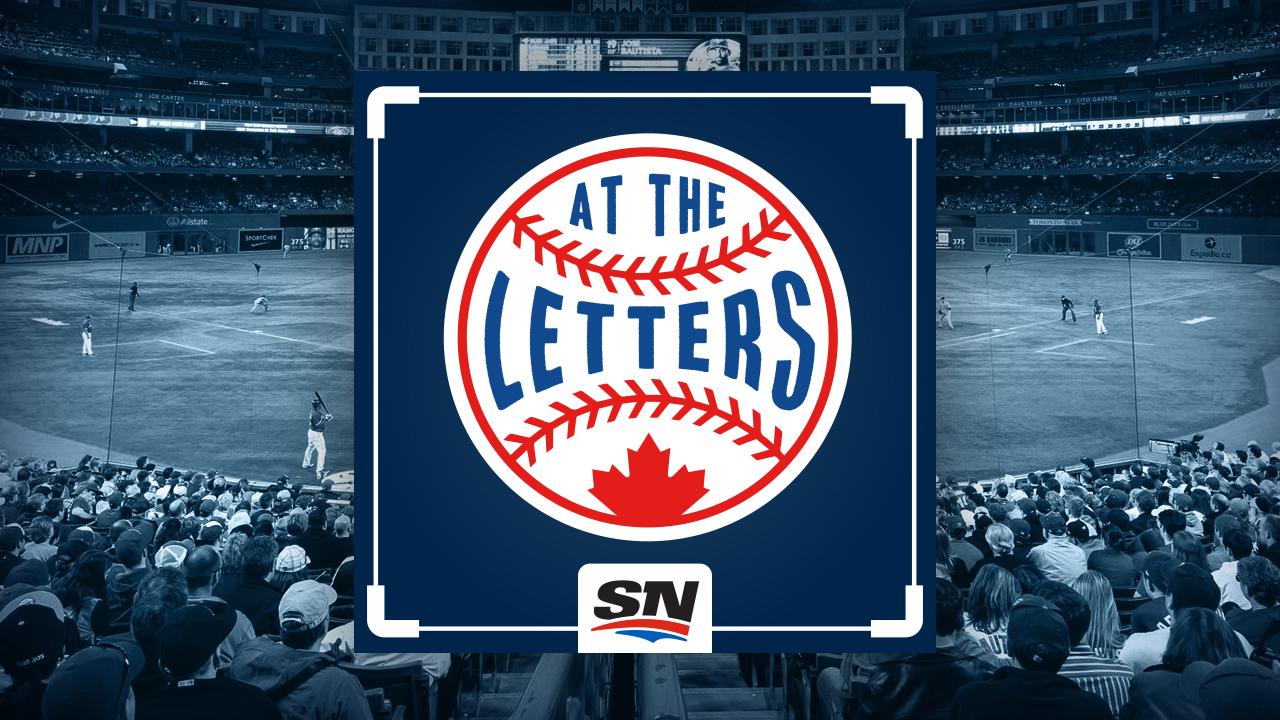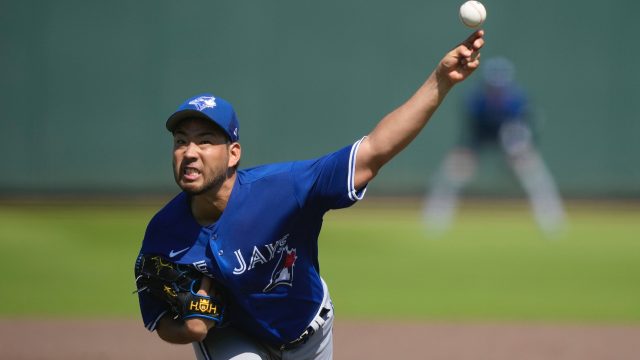
DUNEDIN, Fla. — Alek Manoah loves tests like Wednesday’s.
A Minnesota Twins lineup full of names he didn’t recognize. Nine hitters with a combined 160 MLB games played in 2022 — 112 of them belonging to Willi Castro. No video to watch; not much in the way of scouting reports; insufficient historical data to consider tendencies, swing paths, hot and cold zones. Just live hitters Manoah could stare down from the mound and gauge not only his own game plan against, but his ability to decipher theirs.
That the Twins lineup was so inexperienced is one explanation for how effectively Manoah pitched in his second spring outing, striking out four while walking none and allowing a lone run over 3.1 breezy innings. But Manoah’s exceptional ability to gauge swings, alter his approach, and respond to the feedback hitters are giving him is another.
It’s the kind of stuff Manoah’s doing on the mound all the time and a significant reason why he produced a 2.24 ERA with only a league-average strikeout rate in 2022. Reading reactions, countering approaches, choosing the right pitch and right lane to move pitches off of barrels. Blue Jays coaches rave about Manoah’s ability to make in-game adjustments based on the information he’s receiving in real time.
“He’s really smart,” said Blue Jays manager John Schneider. “He’s evolving as he goes. His repertoire kind of is what it is. But I think using it appropriately is going to be key for him. And he has a really good feel. He can read hitters’ swings. It’s almost like every game is a new adventure for him with what he’s going to be using and when.
“If he’s not getting a heater or a slider to a certain zone, he can make adjustments pretty quickly. I think that’s a big part of what’s made him really successful early in his career.”
Here’s an example. In his fourth inning Wednesday, Manoah started Matt Wallner — a Twins outfield prospect who made his MLB debut last September or, as Manoah referred to him, “the big lefty” — with two four-seamers for balls he didn’t offer at and then a changeup for a strike that he did.
Remembering on the mound how Wallner grounded out on a first-pitch changeup in his prior plate appearance, Manoah figured the left-handed hitter was sitting on his off-speed stuff. So, he went back to the heater, 2-1. But Wallner was thinking along with him and made an adjustment of his own, driving a well-located, down-and-away Manoah fastball into the left-centre field gap for a double.
Manoah will file that information away for the next time he’s presented with similar circumstances. And you can bet it will be front of mind if he faces the Twins this season and Wallner’s in the lineup.
“I’m seeing guys swings and then understanding what kind of plan they have and then watching them make adjustments, too,” Manoah said. “[Wallner] wasn’t making adjustments the first four pitches I threw to him. So, stuck with the plan, and he made an adjustment. It was like, all right, tip the cap to him. It’s a big part of my game — adjusting, reading swings, understanding their game plan. And then being able to attack the weaknesses where I see them.”
Manoah’s perpetually adjusting to how his own stuff is playing, too. In his first spring outing, the 25-year-old toyed with his slider, trying to set it up as an out pitch in the early going before using it to begin plate appearances later on. It was his most-used pitch on the day — he threw it 14 times over 37 pitches — and produced five of his seven whiffs. Two of the three times it was put in play, it generated an out.
Safe to say it was working. But one of the biggest factors Manoah gleaned from how it played was the importance of what he used to set it up. Tunnelling his slider off sinkers and following it with elevated four-seamers is obvious. But sequences like this one, when Manoah doubled up on his changeup before locking up Canaan Smith-Njigba with a slider in on the hands, were illuminating:
[1 Manoah sequence vs. Smith-Njigba]Manoah’s initial instinct was to follow the changeups with an elevated heater. And maybe in the regular season he would. But it’s spring training. So, why not see how the slider plays. Turned out it played well.
Manoah’s initial instinct was to follow the changeups with an elevated heater. And maybe in the regular season, he would. But it’s spring training. So, why not see how the slider plays? Turned out it played well.
So, slider in off a couple good changeups to a left-handed hitter is something that works. Check. What comes next in the process? Throwing those changeups more often as Manoah did Wednesday, using the pitch 20 per cent of the time. Manoah got a swing with it seven of the 9 instances he threw it, generating four foul balls and three weakly-hit balls in play.
“I’ve been working on a lot of different combinations in my bullpens,” Manoah said. “And it felt really good to be able to go out there and use them in a game.”
Manoah’s changeup usage fluctuated last season depending on his game-to-game feel for the pitch. He sprinkled it in around 10 per cent of the time during early-season outings, greatly diminished its use over a few early-June starts, then discovered something with it and began throwing it nearly 20 per cent of the time in July. He finished the year featuring it around 10 per cent of the time again.
Looking at Manoah’s pitch usage chart from last season, you get a real sense of what Schneider’s talking about when he says Manoah was a different guy each time out:
That variability will help Manoah stay ahead of hitters, avoid falling into patterns, and make him tougher to gameplan for. Remember, the entire league now has over 300 innings of video and data on him. Scouts and analysts across MLB are hammering away at well-informed attack plans their hitters can utilize against Manoah as we speak.
But Manoah’s changeup may be his greatest opportunity to counter those game plans. The slider in on the hands to Smith-Njigba was an interesting new wrinkle — but it was the prior two well-executed changeups down in the zone that created the circumstance.
“He wanted to throw his changeup today, he wanted to throw first-pitch sliders,” Schneider said after Manoah’s outing Wednesday. “I think if his sinker is really working to the inside part of the plate, [his changeup]can get easy, quick contact. Or he can throw it first pitch for a strike. Moreso to lefties. But I think to righties, too. If the sinker is on, that’s a really viable weapon.”
To Schneider’s point, Manoah intends to throw his changeup more often against right-handers this season. He believes he has to if he wants to stay ahead of the league. Manoah used the pitch almost exclusively against left-handed hitters in 2022. He knows right-handers have essentially eliminated it when they’re stepping in against him.
Now, this will require some trust in his ability. A right-on-right changeup is a tough pitch to execute in a good spot. And misses can end up in areas where right-handed batters do damage. But as Manoah continues throwing the pitch more often, and his confidence in it grows, he’ll find himself thinking less about the consequences of potentially mis-locating one up over the plate.
During live batting practices this spring, right-handed Blue Jays hitters frequently remarked to Manoah that they had trouble picking up the difference out of hand between his sinker and changeup. So, going forward, instead of throwing a four-seamer up off his sinker in, or even doubling up with the sinker, maybe he springs a changeup on hitters who won’t have seen it highlighted as a pitch he uses in those spots within their scouting reports.
And if he can get a bad swing off that changeup, either to get back in a count after missing the zone with a sinker or earn his second strike on the hitter after locating one, he’ll only open up more attack avenues. Now he can change speeds and eye level with a four-seamer up. Or he can go back to the sinker for a groundball. Or he can double up on the changeup like he did to Smith-Njigba. Or he can spin a slider.
And before you’ve had time to consider all those options as a hitter, here the big man comes to the plate. After being one of Toronto’s slowest workers in 2022, Manoah’s spent his bullpens this spring honing a quicker rhythm and tempo between pitches. It’s been noticeable in his two spring outings. Manoah’s seldom flirted with a low pitch clock through his first five innings. Meanwhile, on multiple occations Wednesday, Twins hitters utilized their timeouts.
“I feel like we’re using the pitch clock to my advantage, putting the pressure on the hitter real fast. The at-bat’s 25 seconds long and the guy’s already down, 0-2,” Manoah said. “I feel like that’s going to be effective — getting on the mound, knowing what I want, and executing it. And then having the hitter actually have to slow the game down. And then at that point, I can do whatever I want. I can hold all the way, I can continue to speed them up. I can play with it back-and-forth.”
It’s what Manoah does. Constantly learning, adjusting, evolving. In bullpens, in pre-game meetings, in his head on the mound. In a spring training outing against a lineup of names that might as well have been create-a-players in a video game.
“We’ve been working on different things in bullpens and this is the time when you can use them. ERA doesn’t matter here. Runs don’t matter here,” Manoah said. “But being able to effectively use those combinations and see them working, that’s a huge confidence booster. You’re literally seeing what you’re working on in the bullpen transfer into the game and work. So, I feel like we’re we’re definitely heading in the right direction.”










